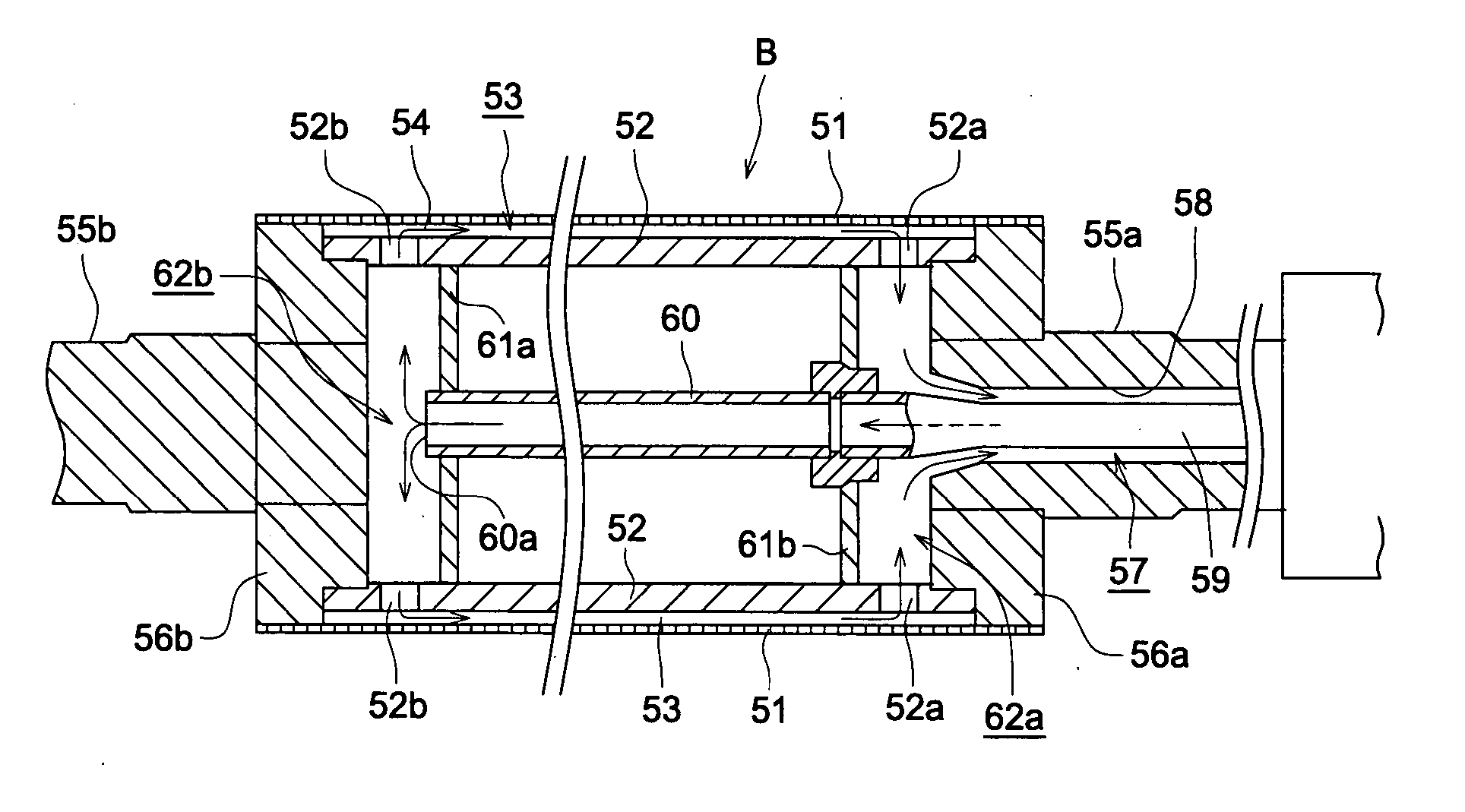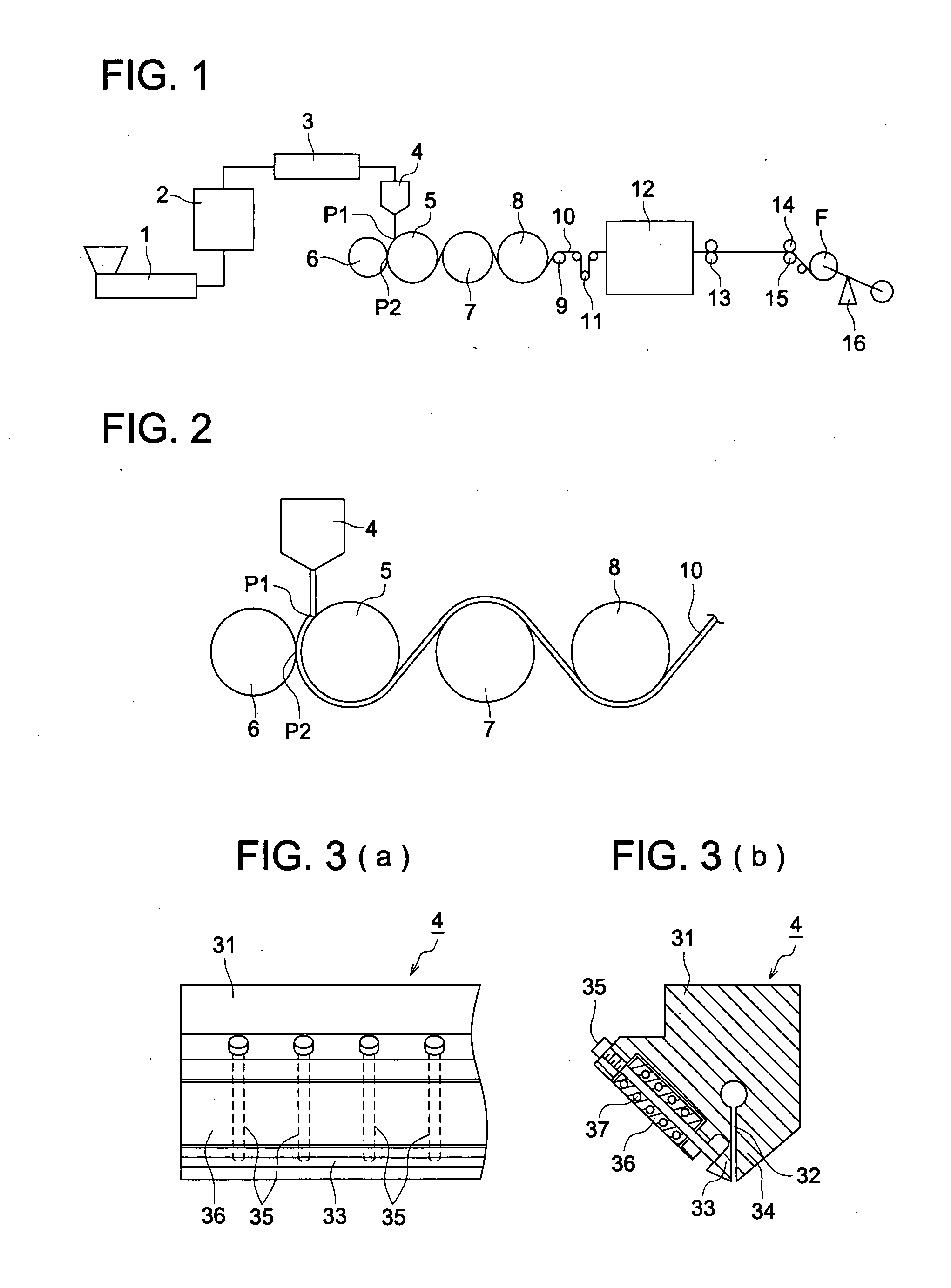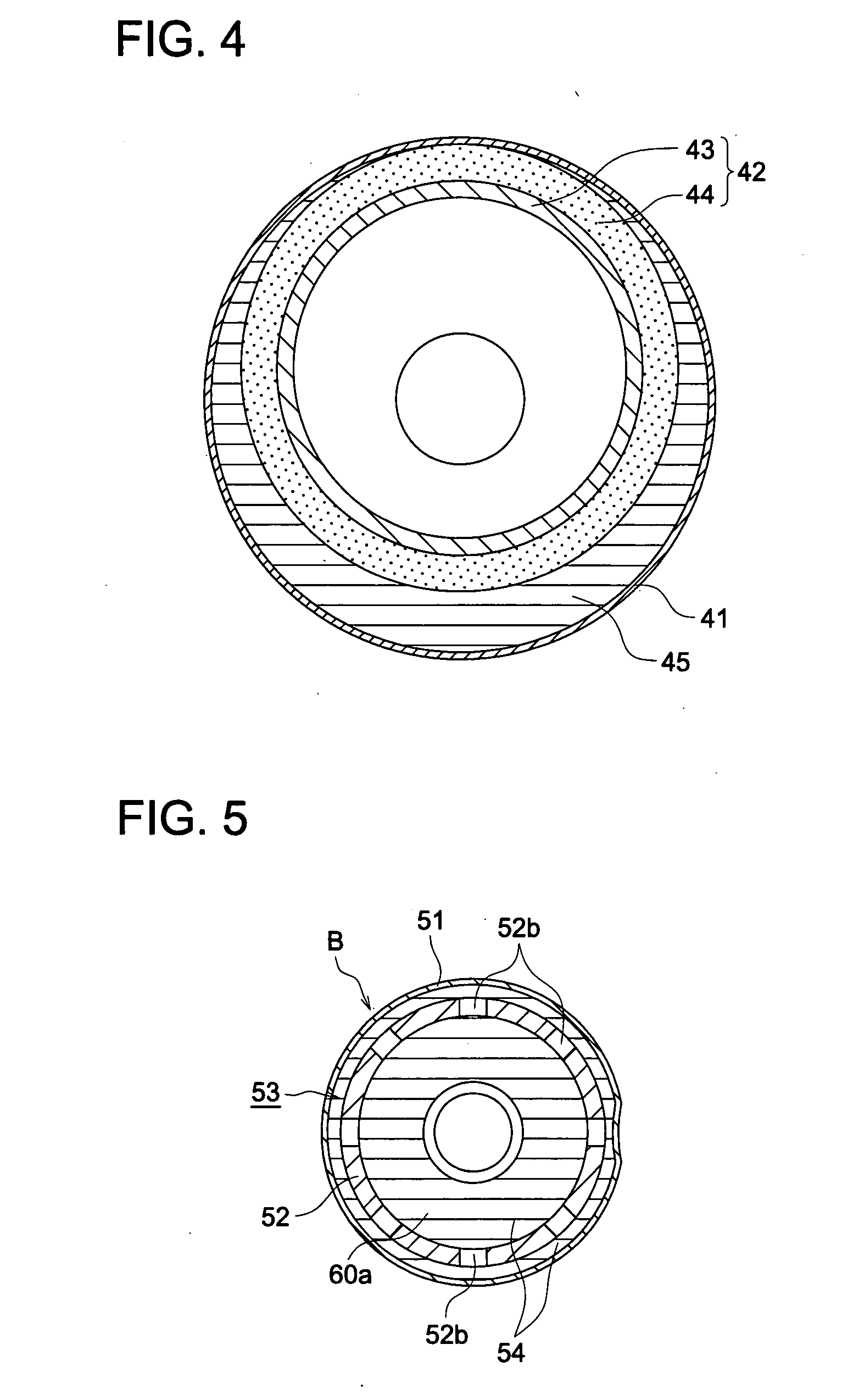Manufacturing method of cellulose acylate film, cellulose acylate film, polarizing plate and liquid crystal display
a technology of cellulose acylate film and cellulose acylate film, which is applied in the direction of polarizing elements, transportation and packaging, and other domestic articles, can solve the problems of increasing the difficulty of increasing the production of cellulose acylate films by the solution casting method, increasing the difficulty of leveling, and reducing the amount of solvent to be used, etc., to achieve suppressed streak irregularities, reduced coloring and deterioration in processing stability, and excellent flatness
- Summary
- Abstract
- Description
- Claims
- Application Information
AI Technical Summary
Benefits of technology
Problems solved by technology
Method used
Image
Examples
example 1
Cellulose Acylate
Example of Synthesis 1
[0444] 30 g of acetic acid was added to 30 g of cellulose (dissolving pulp by Nippon Paper Industries Co., Ltd.), and was stirred for 30 minutes at 54° C. After the mixture was cooled, 150 g of acetic anhydride and 1.2 g of sulfuric acid having been cooled in an ice bath was added thereto so that esterification was carried out. In the process of esterification, the mixture was stirred for 150 minutes by making adjustment so that the temperature would not exceed 40° C. After termination of reaction, a mixture of 30 g of acetic acid 30 g and 10 g of water was dropped for 20 minutes so that excessive anhydride was hydrolyzed. While the reaction solution was kept at 40° C., 90 g of acetic acid 90 g and 30 g of water were added and were stirred for one hour. The mixture was put into an aqueous solution containing 2 g of magnesium acetate 2 g and was stirred for some time. After that, the mixture was filtered and dried to get cellulose acylate C-1....
examples of synthesis 2 through 8
[0445] The acetic acid, acetic anhydride, propionic acid, propionic acid, butyric acid anhydride, butyric acid anhydride shown in Table 1 were used to carry out esterification, similarly to the case of the example of synthesis 1, whereby cellulose acylate C-2 through C-8 was obtained.
TABLE 1FattyAcyl groupTotal number ofFattyacidreplacementcarbon atomsCelluloseacidanhydrideratiocontained in acylacylateIIIIIIAcPrBugroupMwC-130015002.800.00—5.60220000C-2872051502.450.43—6.19211000C-310100101000.651.73—6.49201000C-4872043622.20—0.636.92198000C-5902081251.651.27—7.11238000C-6704081251.451.43—7.19241000C-7209091240.352.20—7.30223000C-809041250.152.73—8.49248000
In Table 1, the symbols denote the following groups:
Acyl group replacement ratio
Ac: acetyl group,
Pr: propionyl group,
Bu: butyryl group
I: acetic acid,
II: propionic acid or butyric acid
Fatty acid anhydride
I: acetic anhydride,
II: propionic acid anhydride or n-butyric acid anhydride
Mw: mass average molecular weig...
example of synthesis 9 through 41
[0447] Similarly to the case of the example of synthesis 1, the corresponding fatty acid and fatty acid anhydride was used to get cellulose acylates C-9 through C-41 shown in Table 2.
TABLE 2Total numberof carbonAcyl groupatomsCellulosereplacement ratiocontained inacylateACPrBuPeacyl groupC-92.58———5.16C-100.351.62——5.56C-110.851.42——5.96C-121.351.08——5.94C-132.650.23——5.99C-142.650.27——6.11C-152.65—0.20—6.10C-162.65——0.166.10C-170.951.43——6.19C-181.650.97——6.21C-191.90—0.60—6.20C-202.00——0.446.20C-210.451.80——6.30C-221.251.27——6.31C-232.10—0.55—6.40C-241.15——0.856.55C-250.691.74——6.60C-260.352.03——6.79C-270.901.67——6.81C-281.351.37——6.81C-292.40——0.426.90C-300.651.90——7.00C-311.35——0.917.25C-321.051.73——7.29C-330.252.33——7.49C-340.552.13——7.49C-351.051.80——7.50C-361.85—0.95—7.50C-372.10——0.667.50C-380.102.60——8.00C-391.00—1.5 —8.00C-401.20—1.65—9.00C-411.30——1.389.50
[0448] In Table 2, the Ac, Pr and Bu of the acyl group replacement ratio indicate the same groups as those of Table ...
PUM
| Property | Measurement | Unit |
|---|---|---|
| temperature | aaaaa | aaaaa |
| width | aaaaa | aaaaa |
| degree of yellow | aaaaa | aaaaa |
Abstract
Description
Claims
Application Information
 Login to View More
Login to View More - R&D
- Intellectual Property
- Life Sciences
- Materials
- Tech Scout
- Unparalleled Data Quality
- Higher Quality Content
- 60% Fewer Hallucinations
Browse by: Latest US Patents, China's latest patents, Technical Efficacy Thesaurus, Application Domain, Technology Topic, Popular Technical Reports.
© 2025 PatSnap. All rights reserved.Legal|Privacy policy|Modern Slavery Act Transparency Statement|Sitemap|About US| Contact US: help@patsnap.com



